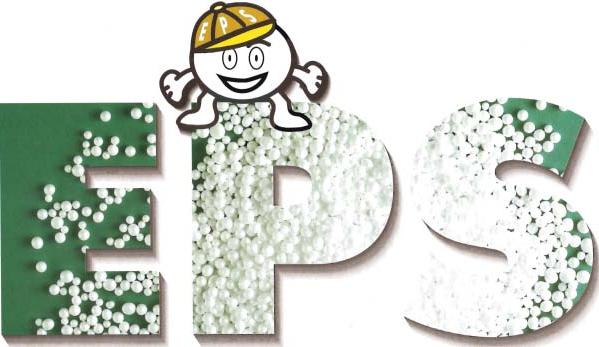|

Introduction: We're getting a lot of questions lately about EPS, other molded foams, the environment and "sustainability". All the tabs under this "EPS and the Environment" section are new and the information was developed to tell our story – not sell it. EPS like all other materials has some impact on the environment, since it is impossible to make something out of nothing. However, if the offsetting positive effects are much greater than the negative ones, that’s a good deal for all of us. A good example of this would be the example cited in “EPS Effects on the Environment” where a study showed that if you insulated your home with EPS, over a 50 year period, for every one unit of energy used to produce the EPS, 70 equal units would be saved. What follows here is a LOT of information. It’s a compilation of data from many sources that endeavors to allow the reader to develop his or her own conclusions about EPS, its effect on our world and the whole sustainability effort. We believe, on balance, EPS is a safe, efficient and sustainable material – taking into consideration all the energy and pollution it saves/avoids. Its production consumes some energy, but less than competitive materials and it saves MUCH more than it uses. It should also be noted that we have focused on EPS because it is the prevalent molded foam in the marketplace, but much of what is cited here applies to all the other molded foams too. Last, this publication would not have been possible without the help and support of the; EPS International Task Force, The European Manufacturers of EPS (EUMPES), the Association National de Poliestireno Expandido (ANAPE) and the Association of Foam Packaging Recyclers (AFPR).
"Sustainability is an attempt to provide the best outcomes for the human and natural environments both now and into the indefinite future. One of the most often cited definitions of sustainability is the one created by the Brundtland Commission, led by the former Norwegian Prime Minister Gro Harlem Brundtland. The Brundtland Commission defined sustainable development as development that "meets the needs of the present without compromising the ability of future generations to meet their own needs." Sustainability relates to the continuity of economic, social, institutional and environmental aspects of human society, as well as the non-human environment". - Wikipedia
The environmental impact of materials, all materials, that make up part of each and every human activity is a field of growing concern and importance. There is nothing new in this consideration, nor is this our goal. Our aim is to shed light on the environmental behavior of EPS (expanded polystyrene), by putting the material into perspective. It has its advantages and, of course, some disadvantages. Even so, it is beneficial for everyone to have comparable data and solid arguments at their disposal so that opinions are formed on the basis of reality and not on rumours, erroneous information or comments picked up from dubious sources. It is the hope and obiective of this website to provide the reader with serious in depth well-documented information about the environmental behavior of EPS, a material which contributes a lot to the balance and conservation of the world in which we live. International recognition of environmental concerns such as global warming, degradation of the ozone layer, acid rain and the depletion of natural resources, is shaping and in many cases changing the methods and criteria employed in selecting and using materials. The impact on the environment of a material is a crucial consideration when determining its future use.
EPS (Expanded Polystyrene) is an excellent material for packaging since its beneficial product protection properties combined with its low weight make it a good choice for a myriad of uses. It is also a light and rigid foam which is widely used in the building and construction industry, mainly as thermal insulation. Nevertheless, growing concern within a highly competitive market about harming our natural surroundings has often led to inexact or incomplete appraisals the effects of EPS on the environment. With this publication we hope to provide global and balanced information about the consequences for the environment stemming from the use of products made with EPS, including those for packaging as well as for construction. 
The Environmental Concept: In recent years environmental awareness has increased in all sectors of industry. If we consider the behavior patterns of modern consumer society there are those who estimate that packaging in general has a negative effect on the environment. Plastics in particular are targeted as the direct cause of certain environmental imbalances. Such reasoning makes up part of the tug-of-war between rival business sectors. The facts, however, lead us to very different conclusions. This document aims to show customers of the expanded polystyrene industry, government organizations, consumer associations and the general public that choosing EPS for the packaging of diverse products satisfies the strictest technical and environmental regulations. Companies that use any kind of material for packaging and packing their products should show environmental responsibility. A mistake in this respect, like choosing an inappropriate material, endangers certain aspects of their business. The information available to these companies, in much the same way as the market in general, is often contradictory or incomplete. With an extensive and rigorous international information program initiated by the EUMEPS (Association of European Manufacturers of Expanded Polystyrene) and the efforts of prestigious multi-nationals, this publication embodies consideration of the objective facts that lead to positive environmental conclusions to be found at the end of this information package. Further information is available from the International Task Force (ITF). No CFC or HCFC's: We will look in depth at the composition of EPS in the appropriate section but we wish to make it clear from the outset that EPS does not and has never contained either CFCs [Chlorofluorocarbons) or HCFC’s (Hydrochlorofluorocorbons) gases which diminish the ozone layer. We will not go into detail yet but we would like to make this point very clearly because it is an area where EPS is blamed for something it has nothing to do with. This is just one example and perhaps one of the most serious, of erroneous conclusions of EPS that might contribute to its being shunned as a material for many applications. The environment is not helped by being fearful of consequences that are not only incorrect but which are diametrically opposed to what is really the case. It is cases like this where the facts contradict erroneous judgments that we hope to clear up in this document.
We invite you on a tour of the facts and reality of EPS. We do not aim to provide you with complex opinions but to provide you with objective data so that you can form your own opinion based on the true state of things.
 Would you like to join us? Please read on...
|